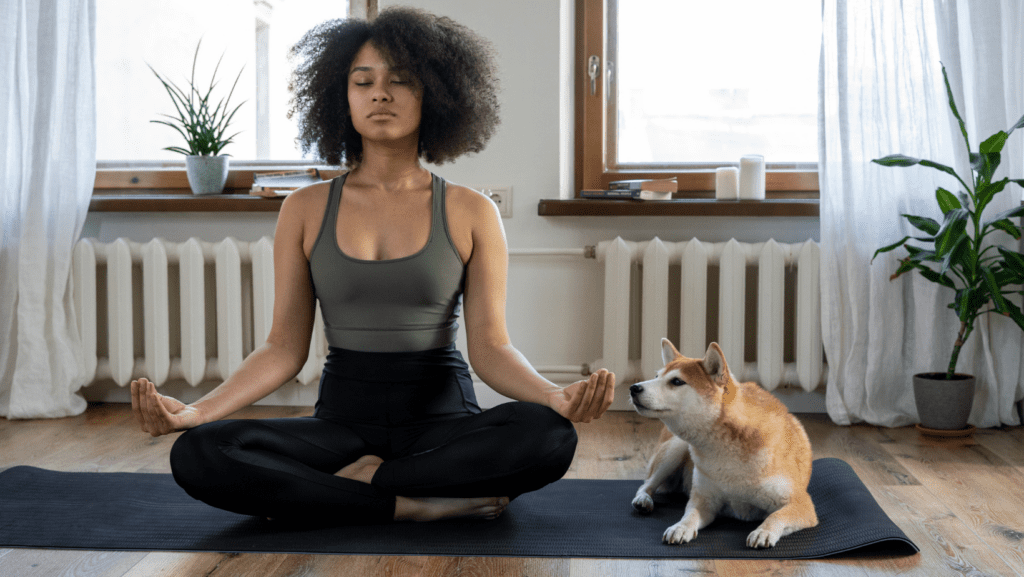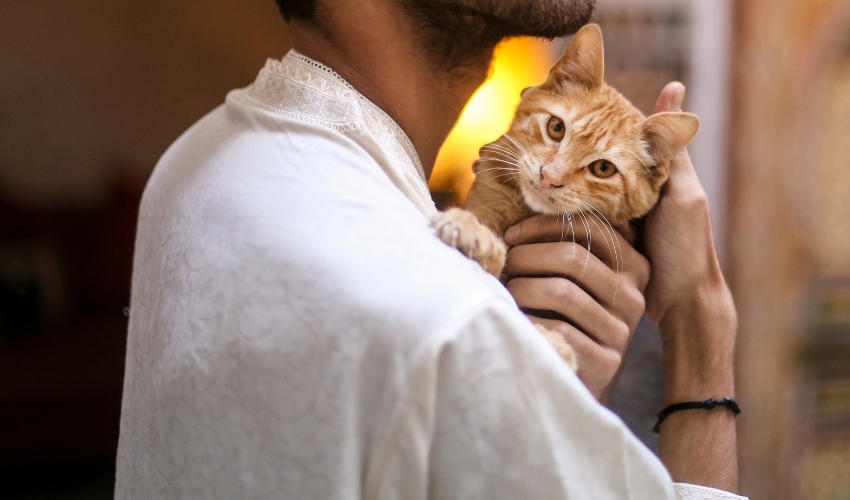In the fast-paced world we live in, finding moments of tranquility and balance is essential for both humans and their furry companions. Enter “Doga” or Yoga for dogs, a holistic approach to enhancing your canine friend’s physical and mental well-being. In this comprehensive guide, we’ll delve deeper into the numerous benefits of practicing yoga with your dog and provide a detailed exploration of simple poses that can contribute to their overall wellness.
Benefits of Yoga for Dogs:
Physical Fitness:
- Just like humans, dogs need regular exercise to maintain a healthy weight and optimal physical health. Yoga for dogs incorporates gentle stretches and movements that improve flexibility, strengthen muscles, and enhance overall agility. Regular practice can contribute to weight management and alleviate joint issues, promoting longevity in your furry friend.
Additionally, the controlled breathing involved in Doga can enhance lung capacity and improve cardiovascular health in dogs. As dogs age, maintaining physical fitness becomes crucial, and Doga provides a low-impact yet effective way to achieve this.
Mental Well-being:
- Dogs, like us, experience stress and anxiety. Yoga provides an opportunity for dogs to relax and unwind. The calming effect of deep breathing and gentle movements can reduce stress levels, improve concentration, and enhance their mental clarity. It’s a wonderful way to bond with your pet while creating a serene environment for both of you.
Furthermore, the mental stimulation provided by Doga poses challenges for your dog’s cognitive abilities. Following your cues and maintaining specific poses requires focus and concentration, contributing to mental exercise and overall well-being.
Improved Bonding:
- Engaging in Doga fosters a strong bond between you and your dog. The shared experience of practicing yoga together enhances communication and trust, deepening the connection you share. It’s a unique and enjoyable way to spend quality time with your furry friend, fostering a sense of companionship.
The bond created through Doga can extend beyond the yoga mat, positively impacting your relationship in various daily activities. The sense of trust and understanding developed during these sessions can translate into improved obedience and cooperation.
Social Interaction:
- Many Doga classes involve group activities, allowing your dog to socialize with other furry companions. This social interaction is especially beneficial for dogs who may be shy or anxious. It can contribute to improved behavior and enhanced social skills, making your pet more comfortable in various environments.
Socialization is a crucial aspect of a dog’s overall well-being, and Doga provides a unique setting for positive interactions. The shared experience of practicing yoga in a group setting can create lasting friendships among dogs and their owners.
Joint Health:
- Dogs, especially older ones or those with certain breeds predisposed to joint issues, can benefit greatly from the gentle stretching involved in Doga. The controlled movements can increase joint flexibility, alleviate stiffness, and contribute to better overall joint health.
Maintaining joint health is vital for ensuring your dog’s mobility and comfort. Doga poses, such as the Downward Dog and Bridge Pose, target key muscle groups around the joints, promoting flexibility and reducing the risk of arthritis and other joint-related issues.
Simple Doga Poses for Canine Wellness:
- Downward Dog:
-
-
- Begin with your dog in a standing position.
- Encourage them to stretch forward with their front legs while keeping their hindquarters raised.
- Hold the pose, allowing for a gentle stretch along the spine and hind legs.
- This pose helps improve flexibility and strengthens the core muscles.
-
- Puppy Pose:
-
-
- Start with your dog in a seated position.
- Gently guide them to lower their chest and head towards the floor, reaching their front paws forward.
- This pose stretches the spine, shoulders, and neck, promoting flexibility and relaxation.
-
- Seated Spinal Twist:
-
-
- Begin with your dog in a seated position.
- Gently twist their torso to one side, supporting their body with your hands.
- Hold the position for a few breaths before repeating on the other side.
- This pose aids in spinal flexibility and improves digestion.
-
- Bridge Pose:
-
-
- Have your dog lie on their back.
- Gently lift their hindquarters towards the ceiling, creating a “bridge” shape.
- Hold the pose to strengthen the hind legs, back, and abdominal muscles.
-
- Mountain Pose:
-
- Start with your dog standing.
- Encourage them to reach their front paws towards the sky while standing on their hind legs.
- This pose promotes balance and stretches the entire body.
Detailed Explanation of Each Pose:
Downward Dog:
- The Downward Dog pose is not only a staple in human yoga but also incredibly beneficial for dogs. As your dog stretches forward with their front legs, the spine experiences a gentle elongation, promoting flexibility. The hindquarters are lifted, engaging the core muscles and strengthening the entire back. This pose is an excellent way to start a Doga session, warming up your dog’s body for further stretches.
Puppy Pose:
- The Puppy Pose is akin to the child’s pose in human yoga, offering a soothing stretch for your dog’s spine, shoulders, and neck. As your dog lowers their chest and head towards the floor, the muscles along the back are lengthened, relieving tension and promoting relaxation. This pose is particularly beneficial for dogs with anxiety or those who may need a gentle stretch to release built-up stress.
Seated Spinal Twist:
- This pose targets the flexibility of your dog’s spine and aids in digestion. As your dog sits and twists their torso gently, the muscles along the spine are engaged, enhancing flexibility. The twisting motion also stimulates the digestive organs, promoting healthy digestion. Incorporating this pose into your Doga routine can contribute to your dog’s overall well-being by maintaining a healthy digestive system.
Bridge Pose:
- The Bridge Pose is an excellent choice for strengthening your dog’s hind legs, back, and abdominal muscles. Lying on their back, your dog lifts their hindquarters towards the ceiling, creating a bridge shape. This engages the muscles along the spine and hind legs, promoting strength and stability. Regular practice of this pose can be especially beneficial for older dogs or those recovering from injuries, as it targets key muscle groups essential for mobility.
Mountain Pose:
- The Mountain Pose is a standing pose that promotes balance and stretches the entire body. Encouraging your dog to stand on their hind legs and reach their front paws towards the sky engages the core muscles and promotes balance. This pose also stretches the muscles along the spine and legs, contributing to overall flexibility. Including the Mountain Pose in your Doga routine adds variety and challenges your dog’s balance, enhancing their physical fitness.
Conclusion:
Yoga for dogs offers a holistic approach to canine wellness, addressing both physical and mental aspects of your furry friend’s health. Whether you’re a seasoned yogi or a beginner, incorporating Dogs into your routine can lead to a happier, healthier, and more harmonious life for both you and your beloved pet. So, roll out your mat, invite your furry friend, and embark on a journey to unleash their well-being through the practice of Doga. Namaste!












